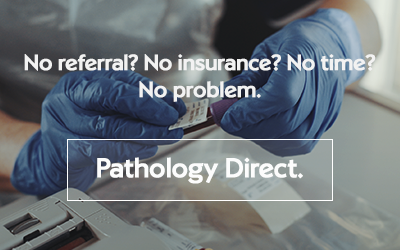4 ways to stay calm during a blood test
- Overview
While it’s true that blood tests are quick, safe and usually painless, they’re not always easy to face. That’s because many of us suffer from a phobia of needles (trypanophobia) or blood (haemophobia) and it's little comfort to be told your fear is simply irrational.
Instead, here are four easy ways to make the experience a little easier, so you can get the tests you need:
- Communicate your concerns
- Distraction is your best friend
- Watch a video or listen to music on your phone and close your eyes
- Bring a friend who’ll keep you engaged in conversation
- Visualise being somewhere else. Close your eyes and take yourself to the beach or somewhere relaxing.
- Stay hydrated and fill your belly
- Keep warm
If you’re anxious about blood tests, the best thing you can do is let your phlebotomist (the person taking your blood) know. Try to put your embarrassment aside and let them help you through it. Give them details about experiences in the past where it’s been difficult to draw blood, or you’ve felt faint or nauseated.
It’s likely they’ve heard it before and know how to help. If you feel faint they can recline your chair or take your blood while you lie on a couch or bed.
Anxiety builds when you obsessively overthink a situation. During a blood test, distract yourself by any means possible. The key to this is never looking at the needle. Here are a few suggestions:
First, ask if your test requires a period of fasting. If it does, try to fast for the minimum time allowed. If it’s 12 hours, book your test for first thing in the morning so you’re only skipping one meal. Most blood tests don’t require fasting so make sure you’re well fed and have had plenty of water.
Low blood sugar, a consequence of skipping meals, can contribute to feeling faint, while dehydration lowers the amount of available fluid in your body and can make it more difficult to draw blood. Drinking plenty of water promotes fuller veins and brings them closer to the surface for easier access.
Read: Blood-injury-needle phobia | The fight against fainting
Low temperatures shrink your veins, making it difficult for the phlebotomist to find an appropriate location to insert the needle. This can draw out the process and make you more nervous. If you’re a typically cold person, or outside temperatures are low, do everything you can to stay warm and get circulation flowing. Wear warm clothing and go for a brisk walk before your appointment.
I felt the needle go in and I thought "great I've done it I've not fainted!" And then I fainted...
The lady was very nice, she just literally took like two tiny things of blood.
I was quite kind of nervous about it. It was okay really I kind of had to look away and she did her thing.
I've never actually had a blood test done before. Ever. So I didn't really know what to expect. But she was excellent, she calmed me down, she told me when to look away.
Barely felt it, the guy was really really good with needles. Definitely the best needle experience I've ever had.
I take blood from patients all the time and I have lots of patients that are scared of blood taking and scared of needles. There's quite a few things you can do number one: Talk to the person taking blood, tell them that you're nervous, tell them that you're scared, it can make a big difference. Two: You know where your blood test has been successful from before and you know the vein that won't give the blood up, let the healthcare professional know where they should look. The third thing to do: Distract yourself, whatever that is.
Obviously I fainted, but I was lying down and it was fine.
- If you are a person that faints when you have a blood test it's okay, we can take our time and both of us will have a better experience.
Last updated Thursday 17 October 2019
First published on Tuesday 4 July 2017


